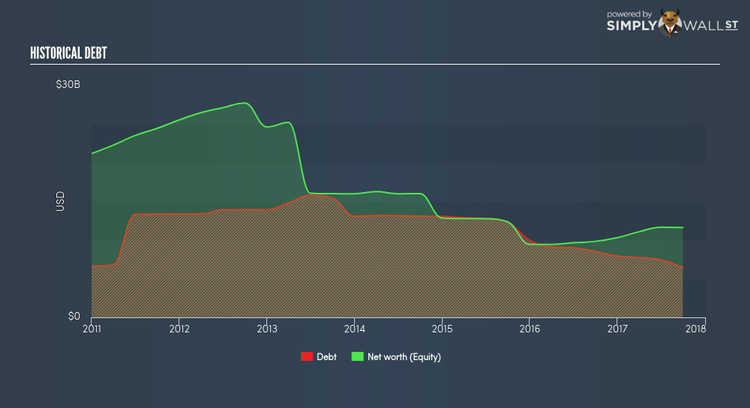How Financially Strong Is Barrick Gold Corporation (TSE:ABX)?

With a market capitalization of CA$21.36B, Barrick Gold Corporation (TSX:ABX) falls in the category of stocks popularly identified as large-caps. These are established companies that attract investors due to diversified revenue streams and ability to enhance total returns through dividends. However, another important aspect of investing in large caps is its financial health. There are always disruptions which destabilize an existing industry, and although large-caps are hard to knock down, it is useful to understand its level of resilience. Here are few basic financial health checks to judge whether a company fits the bill or there is an additional risk which you should consider before taking the plunge. Check out our latest analysis for Barrick Gold
Can ABX service its debt comfortably?
What is considered a high debt-to-equity ratio differs depending on the industry, because some industries tend to utilize more debt financing than others. A ratio below 40% for large-cap stocks is considered as financially healthy, as a rule of thumb. In the case of ABX, the debt-to-equity ratio is 55.47%, which indicates that its debt can cause trouble for the company in a downturn but it is still at a manageable level. We can test if ABX’s debt levels are sustainable by measuring interest payments against earnings of a company. Ideally, earnings (EBIT) should cover interest by at least three times, therefore reducing concerns when profit is highly volatile. In ABX’s case, its interest is excessively covered by its earnings as the ratio sits at 4.46x. Lenders may be less hesitant to lend out more funding as ABX’s high interest coverage is seen as responsible and safe practice.
Does ABX generate enough cash through operations?
A basic way to evaluate ABX’s debt management is to see whether the cash flow generated from the business is at a relatively high level compared to the debt capital invested. This is also a test for whether ABX has the ability to repay its debt with cash from its business, which is less of a concern for large companies. In the case of ABX, operating cash flow turned out to be 0.34x its debt level over the past twelve months. A ratio of over a 0.25x is a positive sign and shows that ABX is generating ample cash from its core business, which should increase its potential to pay back near-term debt.
Next Steps:
Are you a shareholder? ABX’s high debt level shouldn’t be an impetus for investors to sell given its high operating cash flow seems adequate to meet obligations which means its debt is being put to good use. Since ABX’s capital structure could change over time, I encourage exploring market expectations for ABX’s future growth on our free analysis platform.
Are you a potential investor? Although understanding the serviceability of debt is important when evaluating which companies are viable investments, it shouldn’t be the deciding factor. After all, debt is often used to fund or accelerate new projects that are expected to improve a company’s growth trajectory in the longer term. As for next steps, I recommend potential investors to examine ABX’s Return on Capital Employed (ROCE) in order to see management’s track record at deploying funds in high-returning projects.
To help readers see pass the short term volatility of the financial market, we aim to bring you a long-term focused research analysis purely driven by fundamental data. Note that our analysis does not factor in the latest price sensitive company announcements.
The author is an independent contributor and at the time of publication had no position in the stocks mentioned.

